

This instruction applies to the [Printer name from domain; PEAP with EAP-TLS] authentication method. The authentication method refers to the method you selected on PRISMAsync Print Server.
The instructions below refer to Windows Server 2016. Other systems may need other configuration. See the vendor documentation for complete instructions.
These configurations have been done.
 Configure IEEE 802.1X on the authentication server (phase 1)
Configure IEEE 802.1X on the authentication server (phase 1)
 Configure IEEE 802.1X on the authenticator
Configure IEEE 802.1X on the authenticator
 Configure IEEE 802.1X on PRISMAsync Print Server
Configure IEEE 802.1X on PRISMAsync Print Server
Perform the instructions in the order they are listed.
In [Server Manager] click [Tools].
 [Server Manager] options
[Server Manager] optionsOpen the [Active Directory Users and Computers] console.
Right-click the domain name, click [New]. Then click [Group].
Enter a name for the group.
 New group
New groupSelect [Global] in the [Group scope] option group.
Select [Security] in the [Group type] option group.
Click [OK].
In [Server Manager], click [Tools].
 [Server Manager] options
[Server Manager] optionsOpen the [Active Directory Users and Computers] console.
Expand the domain entries.
Right-click [Computers].
Click [New]. Then, click [Computer].
Enter the hostname of the printer.
DNS uses the hostname and appends the DNS domain hierarchy to that name to create the FQDN name.
Find the hostname on the Identity certificate of PRISMA Print Server.
The [Subject alternative name 1], [Subject alternative name 2] or [Subject alternative name 3] field contains the contents of the [Common name] field. This is the Fully Qualified Domain Name (FQDN) printer name, such as: hostname.example.net. Here you enter the hostname part of the FQDN.
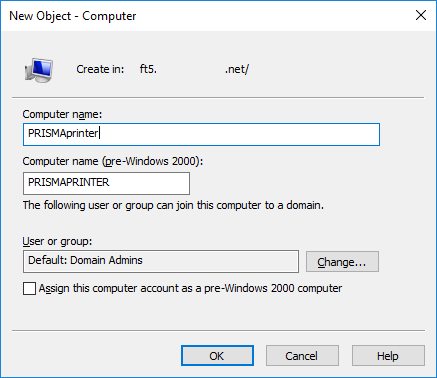 New computer
New computerClick [OK].
When the printer name is added, right-click the name. Then click [Properties].
Click the [Member Of] tab and select the group you created in instruction 1.
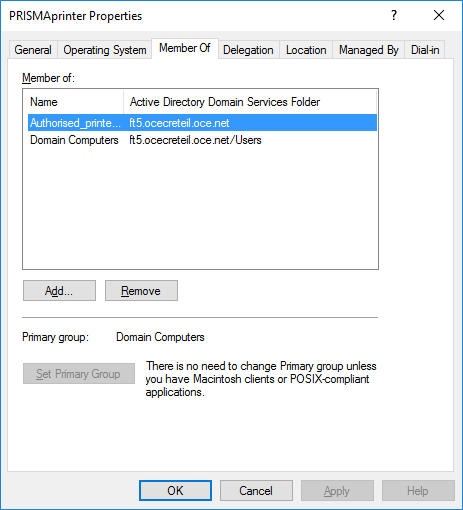 Select group
Select groupClick the [Dial-in] tab.
In the [Network Access Permission] option group, select [Control access through NPS Network Policy].
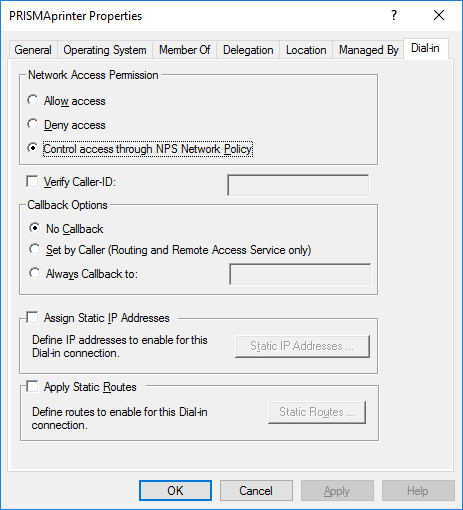 [Dial-in] options
[Dial-in] optionsClick [OK].
Open the ADSI Edit editor.
 ADSI Edit editor
ADSI Edit editorBrowse to the CN=Computers directory.
Right-click the printer name and click [Properties].
Select [servicePrincipalName] and click [Edit].
Enter the printer name according to this format: host/<hostname>.<DNS domain hierarchy> . For example: host/PRISMAprinter.ft5.cppvenlo.cpp.net.
Click [OK].
In [Server Manager] click [Tools].
 [Server Manager] options
[Server Manager] optionsOpen the [NPS] console.
Expand [Policies].
Right-click [Network Policies]. Then click [New]. The [New Network Policy] wizard opens.
Enter a policy name.
 [Network Policies] wizard
[Network Policies] wizardEnsure [Unspecified] is selected in the [Type of network access server] option.
Click [Next].
On the [Specify Conditions] page, select [Machine Groups]. Then click [Add...].
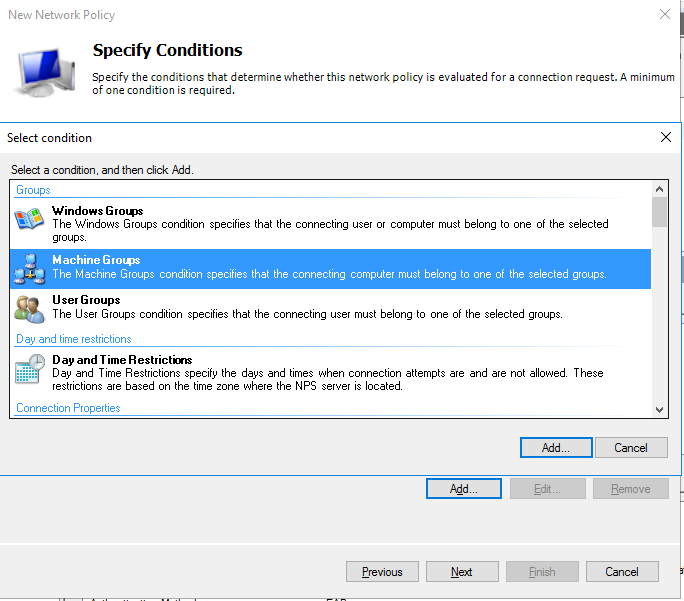 [Network Policies] wizard
[Network Policies] wizardSelect the group you created in instruction 1.
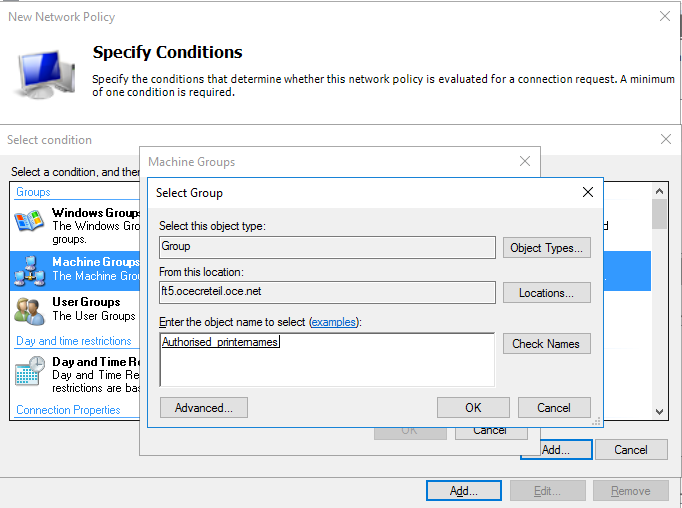 [Network Policies] wizard
[Network Policies] wizardClick [OK] to close the [Select Group] dialog box.
Click [Next].
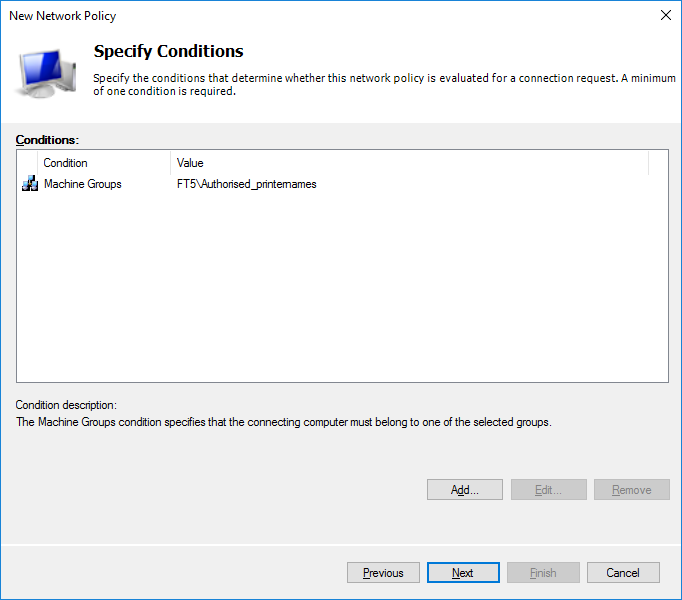 [Network Policies] wizard
[Network Policies] wizardOn the [Specify Access Permission] page, select [Access granted].
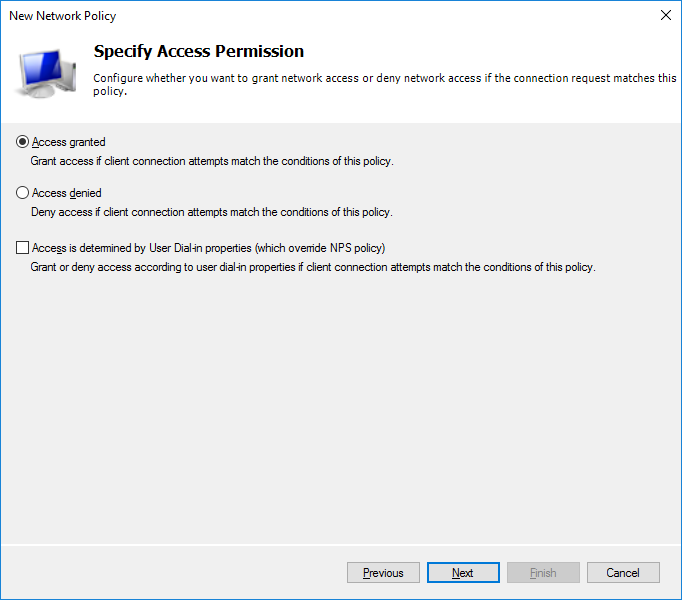 [Network Policies] wizard
[Network Policies] wizardClick [Next].
On the [Configure Authentication Methods] page, click [Add...]].
From the [Authentication methods] list, select [Microsoft: Protected EAP (PEAP)]. Then, click [OK].
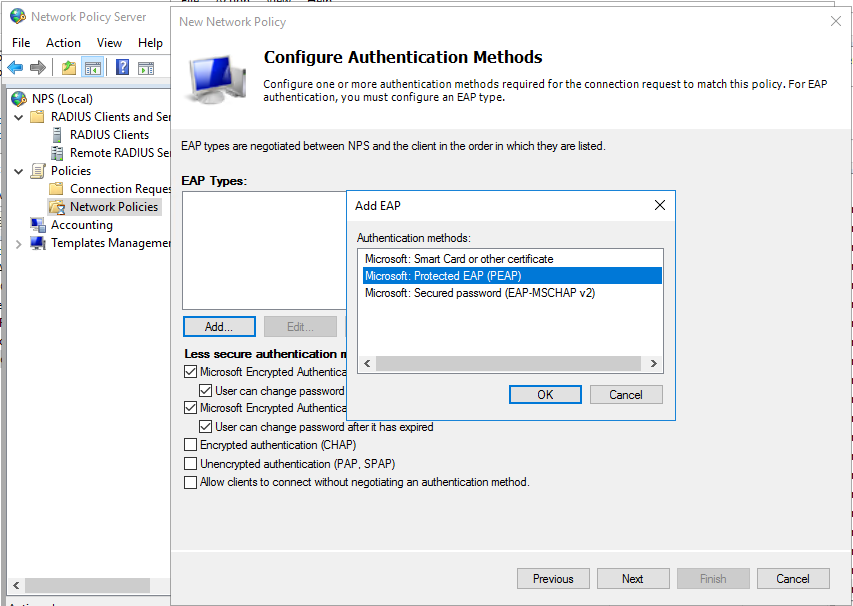 [Network Policies] wizard
[Network Policies] wizardSelect [Microsoft: Protected EAP (PEAP)] and click [Edit].
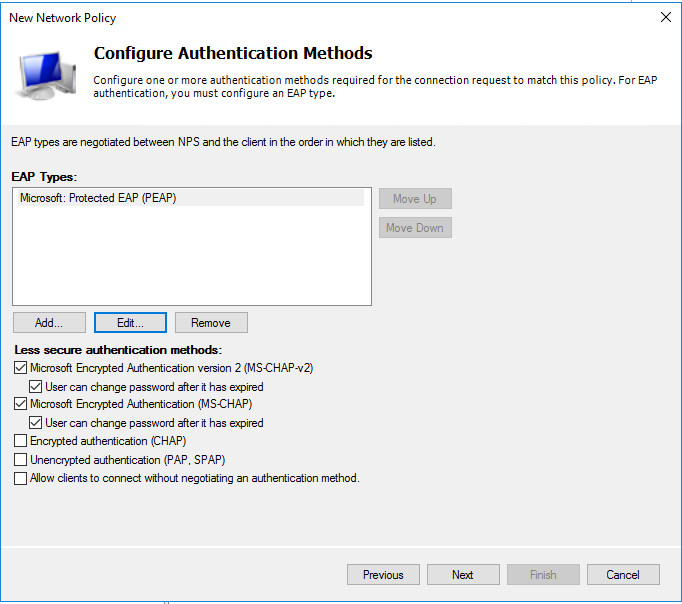 [Network Policies] wizard
[Network Policies] wizardIn the [Edit Protected EAP properties] dialog box, select the Identity certificate of the RADIUS server. This certificate refers to the trusted certificate available on PRISMAsync Print Server.
 [Network Policies] wizard
[Network Policies] wizardFrom the [Eap Types] list, select [Smart Card or other certificate].
When the entry is not in the list, first add it to the list.
Click [Edit] to check if the Identity certificate of the RADIUS server is selected.
Click [OK] to close the [Edit Protected EAP Properties] dialog box.
Clear the [Less secure authentication methods] check boxes that refer to authentication methods you do not want to use.
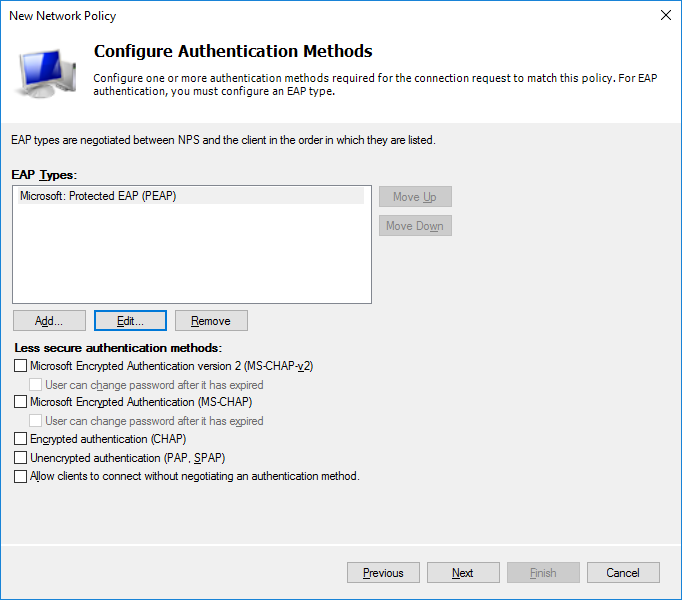 [Network Policies] wizard
[Network Policies] wizardClick [Next].
On the [Configure Constraints] page, click [Next].
 [Network Policies] wizard
[Network Policies] wizardOn the [Configure settings] page, click [Next].
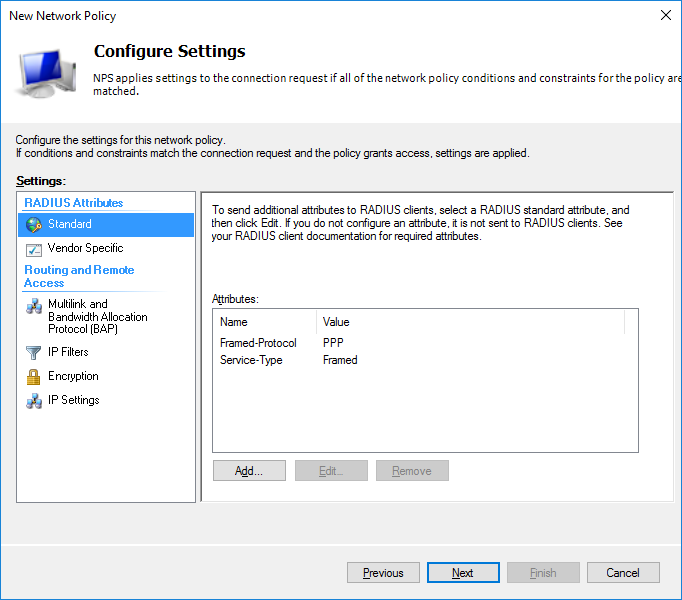 [Network Policies] wizard
[Network Policies] wizardOn the [Completing New Network Policy ] page, click [Finish].
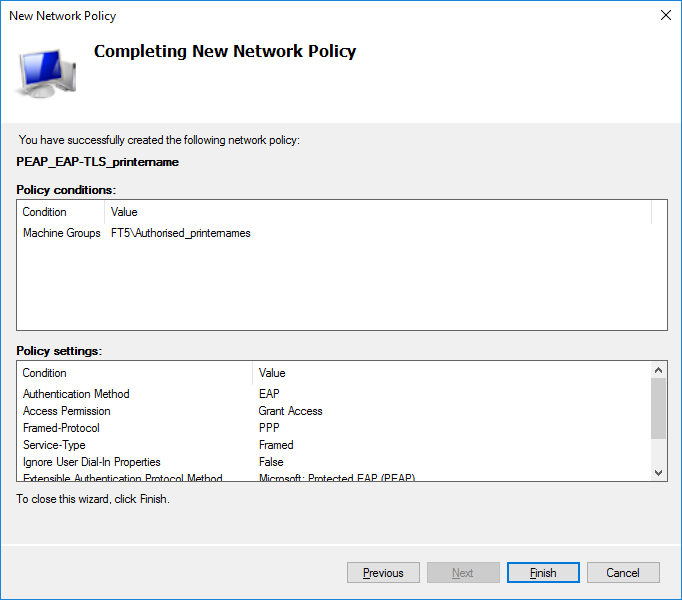 [Network Policies] wizard
[Network Policies] wizard